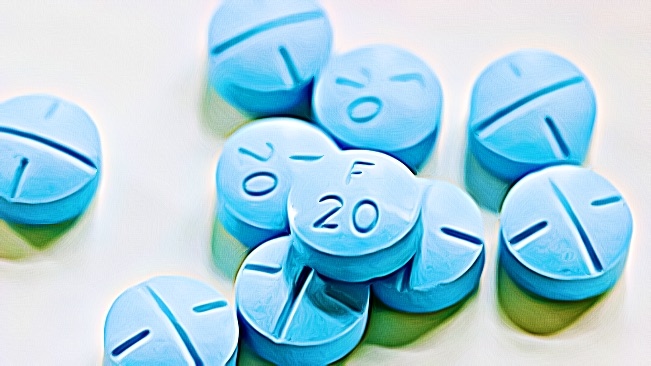Adderall is classified as a controlled substance in the US with practical applications for prescriptive treatment. This means that it’s illegal for people who aren’t affected with narcolepsy or Attention Deficit Hyperactivity Disorder (ADHD) to possess it. Although it’s not as popular as opioids and other narcotics, it’s still an addictive drug prone to misuse among people developing substance abuse disorders.
How long does Adderall Last?
Since it goes through the gastrointestinal tract, only about 20-25% of its content turns into metabolites. This makes it possible to eliminate it faster from the body through a higher urine pH. People with low urine pH can expel the drug faster in their bodies. In contrast, people with higher pH will take longer to process the drug in their bodies. Besides pH levels, other contributors can affect Adderall’s stay in your system. It can stay shorter or longer based on:
- Your frequency of use
- Your dosage of the medication
- Your weight
- Your kidney or liver’s condition
Adderall can stay in the body in varying durations due to the factors above, which is why physicians need to prescribe proper dosages. However, when people abuse an Adderall prescription, it can build up longer in their system and take longer for the metabolizing process. Although it only takes 3 hours for Adderall’s effects to reach peak levels, it can have devastating effects on the body from long-term use.
- How is Adderall detectable?
Like any drug, Adderall will leave trace amounts in a person’s body. Adderall goes through the gastrointestinal tract and is broken down by the liver. Eventually, you excrete its chemical compounds through urinating. It can be detected 2-3 days after the last use and shows a high urine concentration, among other drug tests.
Although urine testing is a standard procedure for testing drugs, Adderall can also be present in your blood, hair, and saliva.
- For blood testing, Adderall is detectable for up to 46 hours since your last use.
- For hair testing, Adderall is detectable for as long as 3 months since your last use.
- For saliva testing, Adderall is detectable between 20 to 50 hours, depending on your body’s absorption of the drug.
Adderall Half Life
Generally, the half-life of dextroamphetamine like Adderall will be between 9 to 14 hours. In people with high pH urine, its half-life goes down to 7 hours at most. However, people with high alkaline content in their urine can have an Adderall half-life of up to 34 hours.
What is Adderall?
Adderall is a brand name of amphetamine that’s under a class of drugs that are stimulants. Its general effects include improving your attention and enhancing your focus when performing different tasks. It’s mostly to address the focus issues of people who have ADHD.

What does Adderall do?
People with ADHD don’t have enough dopamine in their frontal lobe to provide stimulation when starting or completing specific tasks. This is why they engage in impulsive behavior or have low concentration.
Adderall stimulates the central nervous system to stimulate the frontal lobe to provide better focus. For children and adults, medication is only the first step in treating ADHD symptoms since it generally involves behavioral therapy and other lifestyle changes. Although its intended use is for ADHD patients, there are many cases where college students misuse the drug for its practical and recreational effects.
What does an Adderall high feel like?
With high doses, Adderall can give its users a high. It provides a sense of euphoria and energetic rush that makes people more focused on any task that they will do. Adderall comes in two forms: immediate-release and extended-release formulations. People developing drug abuse disorder for Adderall prefer using the extended-release form to get a more pronounced effect.
What are the negative effects of Adderall abuse?
It’s not uncommon among people with substance abuse disorders to undermine the effects of Adderall. These people tend to have a higher bar for overusing it since it doesn’t have the more severe drawbacks of benzodiazepines or opioids. Although Adderall doesn’t come with life-threatening after effects, it has long-term adverse impacts on your body.
People who don’t have ADHD or narcolepsy can create a cycle of psychological addiction from the stimulation that Adderall provides. Even though it gives a temporary rush of self-confidence, it also results in depression, anxiety, and the development of psychotic symptoms.
Changes in brain chemistry aren’t uncommon among people with substance abuse disorders. Since there’s a chemical imbalance in the body, Adderall will result in complications that primarily affect the interactions between the brain and reward-seeking behavior. You may feel overly sensitive to stress or look for other forms of dopamine triggers.
Adderall Withdrawal
Adderall withdrawal will vary depending on your frequency of use. Since it increases your neurotransmitters’ activity, you can get used to the increased engagement that Adderall provides. Because of this, your body simulates the effects of low dopamine and norepinephrine levels. This is why it’s not uncommon for people to develop depression that can linger for weeks to months. Listed below are some common withdrawal symptoms of Adderall:
- Craving for the drug
- An increase in appetite
- Vivid dreams or nightmares
- Slower movements and reflexes
- Feelings of extreme irritability and frustration
- Experiencing too much or too little sleep
- Loss of interest in hobbies
- A growing sense of worthlessness, guilt, and regret
- Thoughts of death or suicide
Besides the symptoms above, you may also start having problems with your focus. Although this is an issue for people taking Adderall as a prescriptive medicine, you can still have this effect even if you don’t have a medical condition of ADHD.

How do you cope with Adderall addiction?
Unfortunately, since Adderall abuse’s effects aren’t as severe as other addictive substances, there aren’t particular forms of medication for withdrawal. However, there are some prescription medications you can take to ease the symptoms that you have. Listed below are three potential solutions to your Adderall withdrawal phase:
- Anti-anxiety medicine: Experiencing uncontrollable bouts of anxiety aren’t uncommon for people withdrawing from Adderall. This is why clonazepam like Klonopin can help manage your symptoms of irritation, depression, and aggression for the first few days of being in rehab treatment.
- Antidepressants: Taking antidepressants in advance can improve your experience with post-withdrawal depression. However, you still need to consult with your physician if it’s best to take them during your rehab period.
- Over-the-counter pain relievers: Besides psychological pain, you may also experience body aches ranging throughout your body. Thankfully, Advil, Excedrin, or Tylenol won’t make any disruptions in your body’s chemical balance during your withdrawal period.
Taking the first step to recovery can be challenging, especially if you’re afraid of the social implications of getting help. Nevertheless, you shouldn’t let these hurdles prevent you from getting the help you need. Seeking out a professional to assist you in your road back to sobriety is necessary for a guided path back to better health.
It’s necessary to work with your doctor when processing your condition. Since most people with substance abuse disorder prefer abusing more than one drug, it’s not uncommon to have a complicated case for different withdrawal symptoms. This is why it’s necessary to seek out a rehab center that can accommodate your needs.
Sources
https://www.jhsph.edu/news/news-releases/2016/adderall-misuse-rising-among-young-adults.html
https://www.drugabuse.gov/publications/drugfacts/prescription-stimulants




